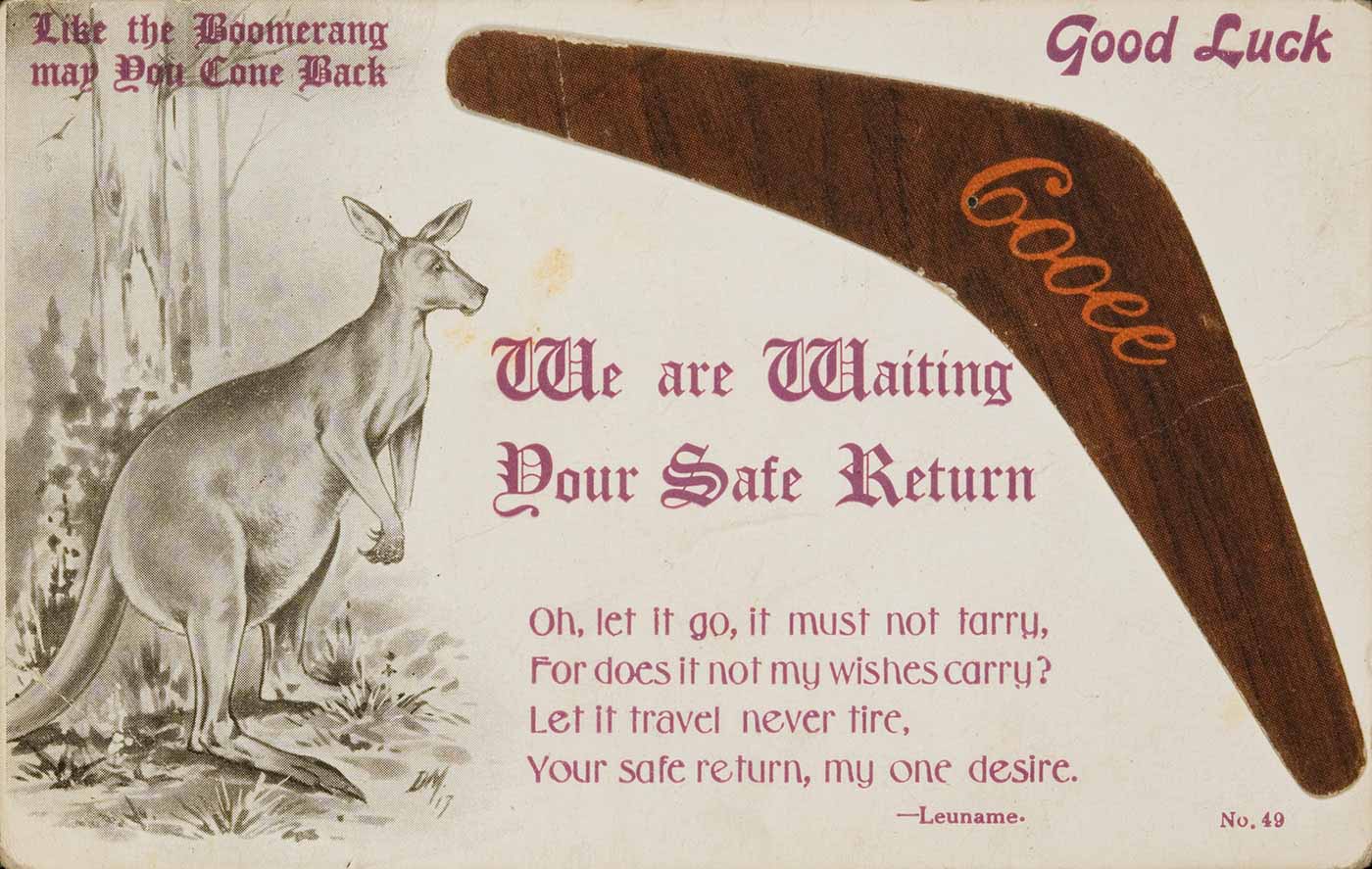Boomerangs are an internationally recognised symbol of Australia. For Aboriginal people the boomerang is as old as creation and a symbol of the enduring strength of Aboriginal culture. The boomerang has also been a popular symbol for tourism and travel, with notions of visitors returning 'like a boomerang'.
More on the boomerang
The boomerang is a symbol of cultural endurance and a tangible link to the long presence of Aboriginal people on the continent.
First Nations people at La Perouse continue to make shellwork objects and boomerangs.

Australian National Travel Association poster designed by Gert Sellheim, 1957
![A black and white full length photograph of a man dressed in a suit [Neville Bonner] holding three boomerangs in his left hand after throwing one from his right hand. - click to view larger image](https://www.nma.gov.au/__data/assets/image/0003/761007/MA23089246-Neville-Bonner-1200h.jpg)
Senator Neville Bonner, 1971

Australia Day badge, 1918

'There and back' Trans-Australia Airlines poster, about 1950s

Boomerang depicting the Sydney Harbour Bridge, unknown maker, La Perouse

‘Like the boomerang may you come back’ postcard, about 1914–18

Trophy awarded to Miss Australia, about 1963
Hunting tool with many uses
Boomerangs have many uses for First Nations people, including as a weapon and a tool, for hunting and digging, and in ceremonies. Some are designed to return to the thrower but the vast majority are not.
For many thousands of years, Aboriginal groups exchanged boomerangs across the continent. Trade in boomerangs continued after 1788. European fascination with the boomerang, especially the returning variety, meant that early barter with settlers, and then tourists, led Aboriginal people to create an industry making boomerangs. That trade continues today.
The National Museum's collection includes hundreds of boomerangs from across the continent.
Australian advertising symbol
The boomerang's popularity as a souvenir helped transform it into a national symbol and it has branded a range of products – from brandy, to butter, cigarette papers and flour – as distinctly Australian.
The boomerang's ability to return made it a favourite symbol for the tourism and transport industries. Australian military emblems have featured the boomerang, as have gifts and memorabilia associated with visiting royals and other celebrities. Both uses express the wish that the recipient or wearer might return 'like the boomerang'.
In our collection